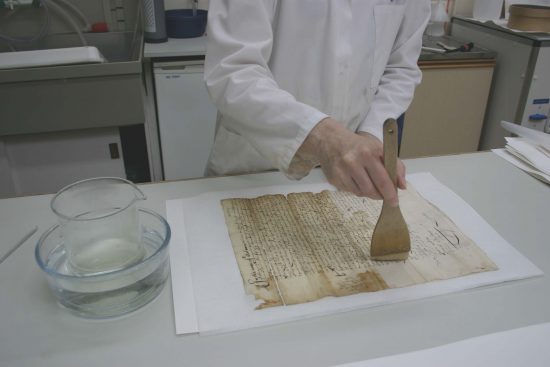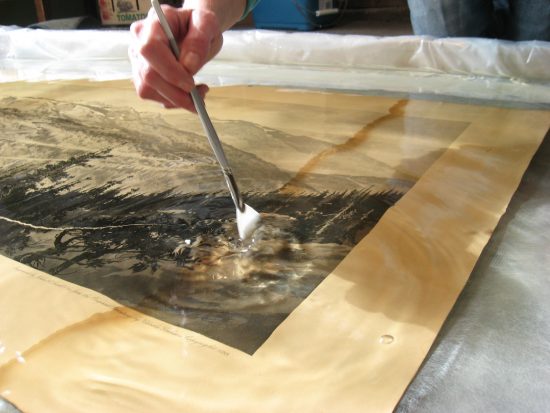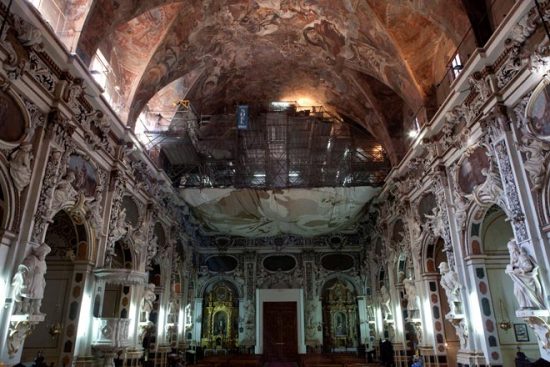According to Mike Olson, an unlikely partnership with an even stranger toolbox has emerged to restore the frescoes at the Church of Santos Juanes in the Spanish city of Valencia, otherwise known as the birthplace of paella. Between the two of them, the Centre for Advanced Food Microbiology and the Polytechnic University at the Institute of Heritage Restoration identified the ideal restoration tool: a salt- and glue-eating bacteria. Let those who believe food and art to be separate take note.
Pseudomonas stutzeri was developed by a team of biologists, their efforts driven in part by Pilar Bosch, who learned her tricks from the group that cleaned the Campo Santo di Pisa in Italy. Growing the bacteria in a culture containing the elements that need to be removed from the frescoes, the scientists develop a strain that eats away, literally, at the gluey remnants of past botched restoration attempts and at the salt blooms left by pigeon nests.
The bacteria are spread on an area of the frescoes and covered with a gel; when heated by a lamp, this gel generates humid conditions under which the Pseudomonas thrive, and get to work. Just 90 minutes later, the targeted area of the fresco is washed clean with water and dried, killing the bacteria and leaving behind a shiny clean section to admire.
In this way, about one third of the frescoes decorating the walls of the baroque and gothic Church, whose original structure dates back to the 13th century, have been restored to date.
What strikes me, and what might occur to fresco aficionados, is how this restoration-by-bacteria creates a neat symmetry, revealing what was created through similar means. The artist paints one pre-determined portion of fresco per day. Before work begins, wet plaster is laid down. The fragment must be completed before the plaster begins to dry. Any mistakes must be manually removed, and sometimes the entire section - called a giornata in Italian due to its daily time limit - has to be taken out.
Bosch and her team of people and Pseudomonas might think of their own work as broken down into miniaturegiornata, 90-minute cycles of apply and unveil. As for this joint venture of bacteria, biologists and baroque art, I knew the world needed to know.
Read about paper conservation.




